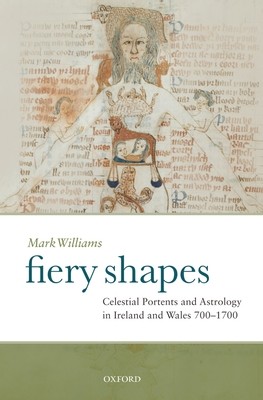
- We will send in 10–14 business days.
- Author: Mark Williams
- Publisher: Oxford University Press, USA
- ISBN-10: 0199571848
- ISBN-13: 9780199571840
- Format: 15.8 x 23.6 x 2.3 cm, kieti viršeliai
- Language: English
- SAVE -10% with code: EXTRA
Reviews
Description
The presentation of the magical and mantic in Celtic literature has persistently been dogged by misunderstanding and over-romanticized readings. Among the misconceptions about the ancient and medieval Celtic peoples, the notion of a specifically 'Celtic' astrology remains widespread in the popular mind. This study aims to counter such myth-making, and to demonstrate how a number Irish and Welsh literary writers in the medieval and Early Modern period conceived of portents in the heavens - comets, blood-coloured moons, darkened suns - and what they knew of the complex art of astrology.
Early Irish churchmen felt that the end of the world was imminent, and this book explores the ways in which they saw signs in the heavens as evidence of impending apocalypse, and how they adapted such millenarian imagery for use in native sagas in Irish. It then moves on to an extended discussion of the cloud-divination ascribed to Irish druids in high medieval literary texts; this has sometimes naively been taken as evidence for the actual customs of the druidic caste, but it is shown here to be a development of the later Middle Ages, long after the druids' disappearance. Turning to Wales, the cosmological knowledge of two linked figures is scrutinized: the super-poet Taliesin, and King Arthur's prophet Merlin, whom Geoffrey of Monmouth represented in the mid 12th century as an astrological sage with a purpose-built observatory. Evidence for the knowledge of astrology amongst the learned poets of later medieval Wales is then laid out, with an analysis of a powerful late 15th centurypoem indicting the evil influence of the planet Saturn; such knowledge seems to have been largely medical in nature, and the book concludes with an examination of a number of Welsh astrological texts in manuscript, setting them against the longest astrological poem in a Celtic language, the mid 17th century Puritan mystic Morgan Llwyd's spiritualizing and evangelical 'Heavenly Science'.
EXTRA 10 % discount with code: EXTRA
The promotion ends in 22d.07:39:43
The discount code is valid when purchasing from 10 €. Discounts do not stack.
- Author: Mark Williams
- Publisher: Oxford University Press, USA
- ISBN-10: 0199571848
- ISBN-13: 9780199571840
- Format: 15.8 x 23.6 x 2.3 cm, kieti viršeliai
- Language: English English
The presentation of the magical and mantic in Celtic literature has persistently been dogged by misunderstanding and over-romanticized readings. Among the misconceptions about the ancient and medieval Celtic peoples, the notion of a specifically 'Celtic' astrology remains widespread in the popular mind. This study aims to counter such myth-making, and to demonstrate how a number Irish and Welsh literary writers in the medieval and Early Modern period conceived of portents in the heavens - comets, blood-coloured moons, darkened suns - and what they knew of the complex art of astrology.
Early Irish churchmen felt that the end of the world was imminent, and this book explores the ways in which they saw signs in the heavens as evidence of impending apocalypse, and how they adapted such millenarian imagery for use in native sagas in Irish. It then moves on to an extended discussion of the cloud-divination ascribed to Irish druids in high medieval literary texts; this has sometimes naively been taken as evidence for the actual customs of the druidic caste, but it is shown here to be a development of the later Middle Ages, long after the druids' disappearance. Turning to Wales, the cosmological knowledge of two linked figures is scrutinized: the super-poet Taliesin, and King Arthur's prophet Merlin, whom Geoffrey of Monmouth represented in the mid 12th century as an astrological sage with a purpose-built observatory. Evidence for the knowledge of astrology amongst the learned poets of later medieval Wales is then laid out, with an analysis of a powerful late 15th centurypoem indicting the evil influence of the planet Saturn; such knowledge seems to have been largely medical in nature, and the book concludes with an examination of a number of Welsh astrological texts in manuscript, setting them against the longest astrological poem in a Celtic language, the mid 17th century Puritan mystic Morgan Llwyd's spiritualizing and evangelical 'Heavenly Science'.


Reviews